Oman
Oman ¼ Rial Saidi
Sultanate of Muscat and Oman
Jalali Fortress
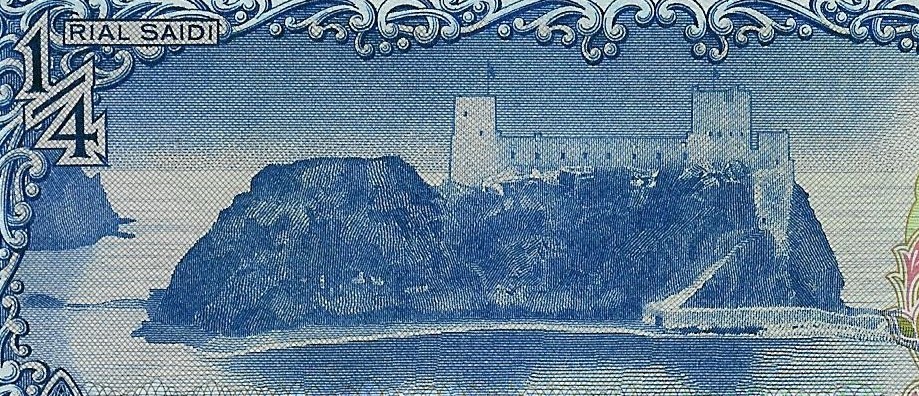
The first issue of currency for Oman was in 1970 when the Sultanate of Muscat and Oman was introduced by Said bin Taimur, Sultan of Oman. He was then deposed as Sultan by his own son only two months after the new national currency was introduced.
Politically, Said had to parry with the British colonialist remnants, the religious Imam, and Saudi Arabia, but the pressures were not necessarily his downfall. As he was aging, Said had become increasingly more secluded and isolated from the public and several government offices. While his dealings with oil exports generated a large amount of money, he did not use it to improve the living conditions of the people.
Before Sultan Said bin Taimur introduced the new currency, Oman had been using a system of foreign currencies. Of these, the Maria Theresa Silver Thaler coin and the Indian Gulf Rupee were the main currencies. The decision develop a new national currency was not, however, a result of his erratic and paranoid behavior, but a long overdue change in monetary management. In doing so he was able to eliminate the confusing and time consuming trade using not only the Indian Gulf Rupee and Maria Theresa Thaler, but a host of other foreign currencies used throughout the sultanate. A single currency induced a sense of unity and help commerce flow more quickly and easily. In this ¼ Rial Said banknote featured here, we can see that not only is it a national currency, it is named after the Sultan himself. This bit of vanity was assuredly self-serving as it would remind everyone that he was the one in charge.
His reclusiveness however eventually led to a revolt in 1965 within the Dhofar governorate (similar to a province) at the southern border with Yemen. This ultimately led to an assassination attempt against Said, which caused him to become even more reclusive, moving his residences and making strict odd laws. It quickly became illegal to smoke in public spaces. People could not talk to anyone for more than 15 minutes at a time, and even wearing sunglasses was forbidden!
The Sultan grew increasingly more ignorant of the state of his country, and was paranoid of the workings against his power. When his own son, Qaboos, returned from his studies in the British Royal Military Academy, the Sultan had him placed under house arrest. It was reported that the Sultan never said a word to his son while he was confined, even though he was confined in the same compound that Sultan Said lived and worked in.
Perhaps the Sultan knew something already or, more likely, his son Qaboos probably had quite enough of his house arrest, and on July 23rd, 1970 Qaboos led a coup against his father’s erratic rule. The now deposed Sultan Said was eventually sent to live the rest of his life in London at the Dorchester Hotel. Having ended his father’s rule, Qaboos started improving the country’s infrastructure using the revenues generated by the oil industry, bringing much needed improvements to the living conditions to the people, and industries began to flourish throughout the country. Qaboos kept his father’s new currency going as it was too new to make a dramatic change in the freshly printed money. However, some changes were placed into effect as time went on, primarily changing from honoring the legacies of the past to the celebration of the improvements to the evolving Sultanate of Oman.
The main focus of this note is of course the back with its depiction of an old fortress. Though it doesn’t mention the name of the fort, it is the Jalali Fort in the capital city of Muscat, on the North-west coast of Oman.
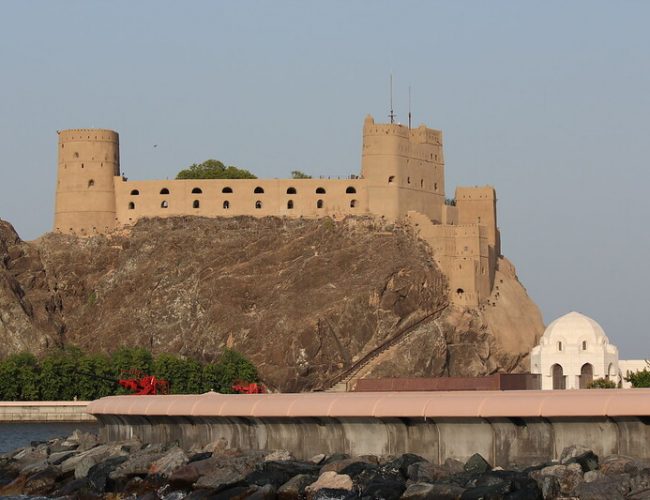
The Portuguese trade dominated the entire area for over 140 years, from 1507-1650. They were under constant threat by the British, Dutch and Ottoman traders. In an effort to maintain their trade monopoly, the Portuguese built several forts, including the Jalali Fort, which was originally built by in 1587. There is another fort in Muscat, called the Mirani, which is not on this banknote. In 1650 the Omani tribes banded together and drove the Portuguese out, capturing Muscat and the Jalali Fort on January 23rd, 1650. Once they held control of the city Oman itself became a major trading power in the area. The original Portuguese name of the fort was Forte de São João. The name of Jalali is a mystery, but one possibility is that it was from the Arabic “Al Jalal” for “Great Beauty”.
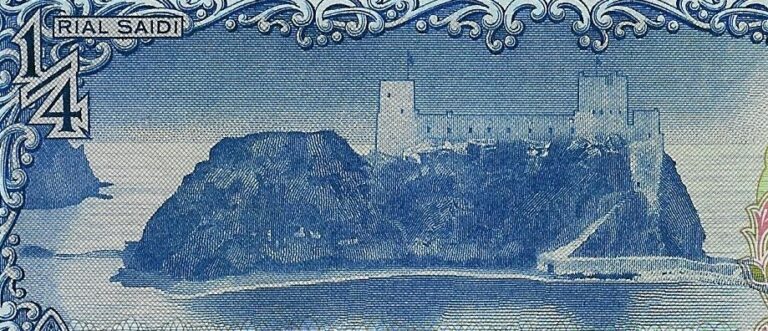
The fort was used as a prison for a large part of the 20th century, but in 1983 it was restored and converted into a private museum highlighting the culture and history of Oman. As a private museum it is usually reserved for visiting dignitaries, heads of state, etc. While it is not open to the general public on a regular basis, there are evidently “Free Days” which occur a few times a year, when it is open to the public. Some people can visit by obtaining permits through the Ministry of National Heritage. There are reports that there are amazing views from the fort and the general area outside the fort. The only entrance to the fort was until recently via a steep staircase along the front side. Since the renovation there is now a helicopter pad and a cable pulled railcar called a funicular, which pulls and lowers the railcars up the steep incline.
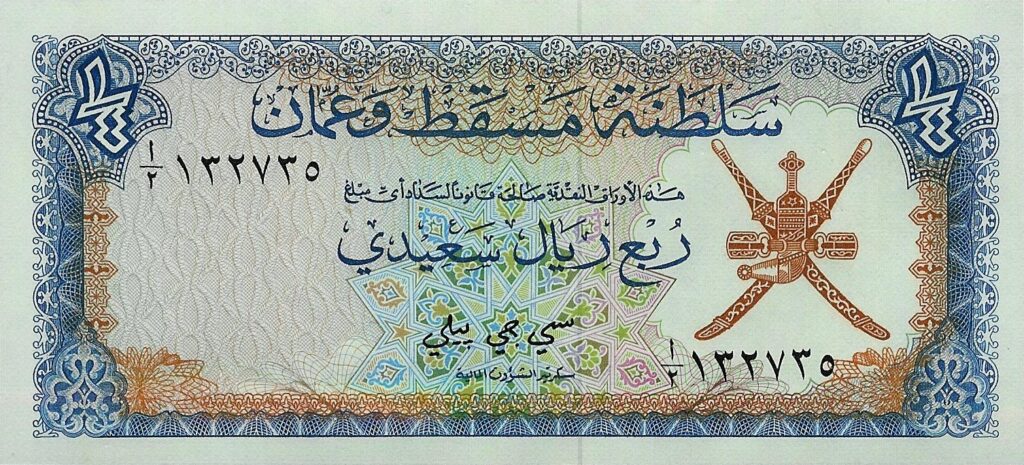

The ¼ Rial banknote, 1970. Note the ‘Rial Said’ on the back top corners a
nd the title of Sultanate of Muscat and Oman on the back, bottom.

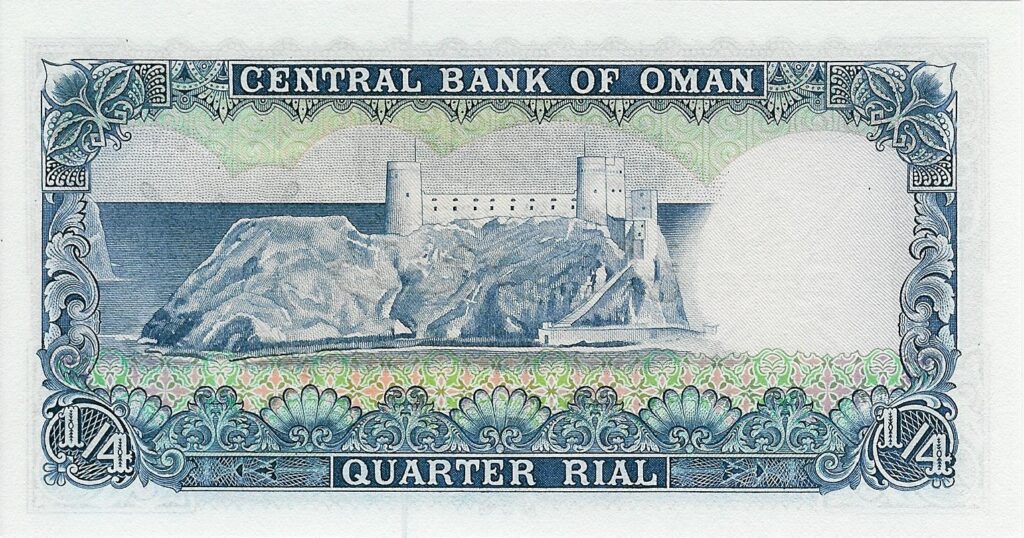
The ¼ Rial banknote, 1977. Qaboos made changes when the currency could be renewed, including eliminating the name Said from the denomination, and the issuing authority changed from the Sultanate of Muscat and Oman to the Central bank of Oman.